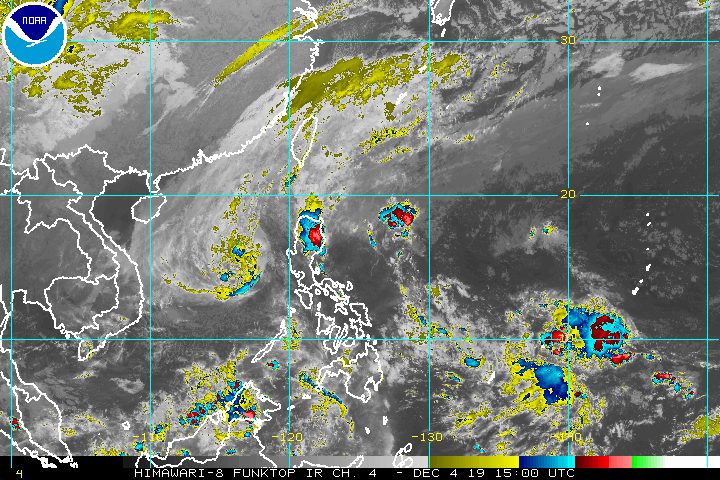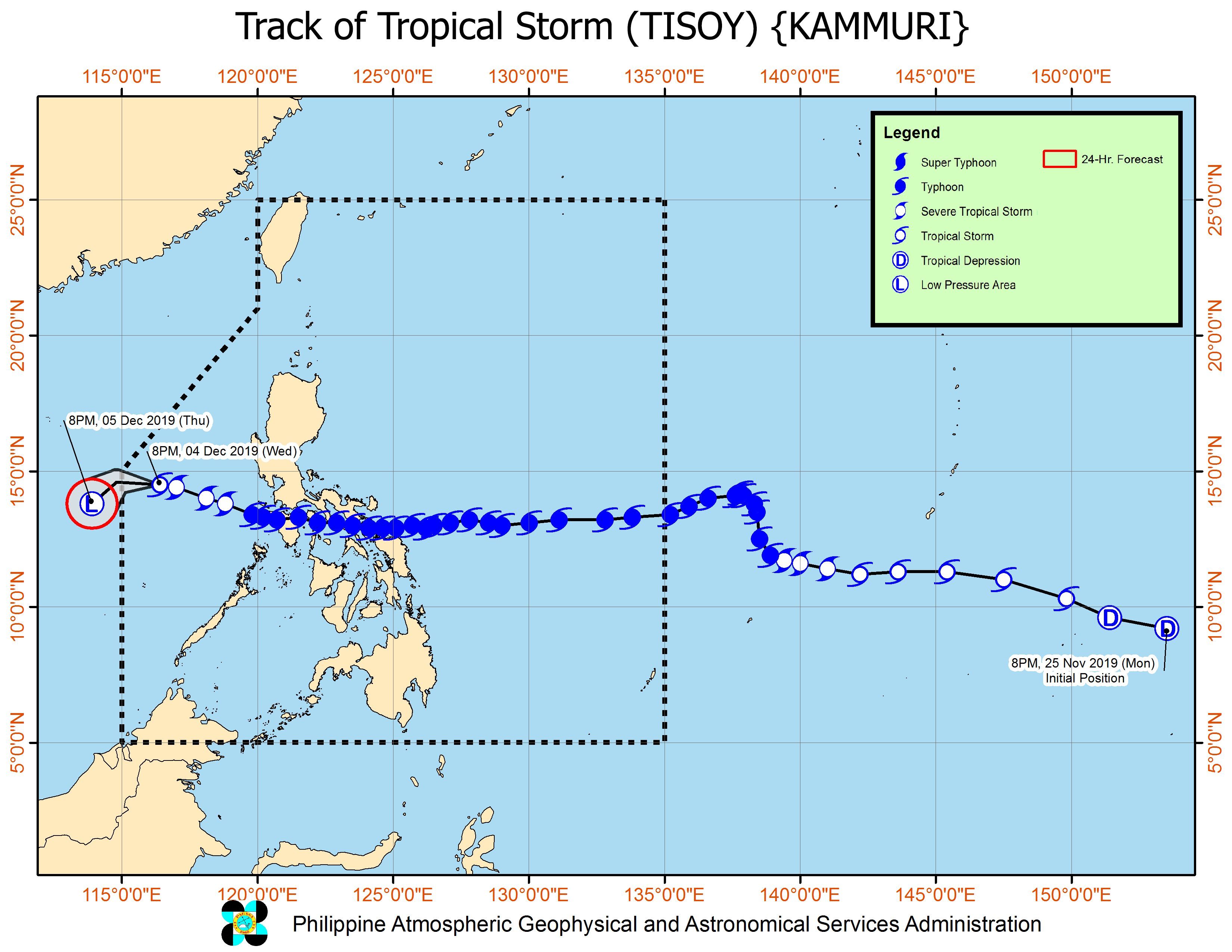SUMMARY
This is AI generated summarization, which may have errors. For context, always refer to the full article.

What’s the weather like in your area? Tweet us at @rapplerdotcom.
MANILA, Philippines – Tisoy (Kammuri), a typhoon at its peak, further weakened from a severe tropical storm into a tropical storm on Wednesday evening, December 4.
The reason for its gradual weakening: the surge of the northeast monsoon or hanging amihan. The northeast monsoon’s cold air counters the warm air that fuels Tisoy, and it is also affecting Northern Luzon.
In a briefing past 11 pm on Wednesday, the Philippine Atmospheric, Geophysical, and Astronomical Services Administration (PAGASA) said Tisoy is already 420 kilometers west of Subic, Zambales.
It is still moving away from the country, but at a slow pace of 10 kilometers per hour (km/h).
Tisoy now has maximum winds of 75 km/h from the previous 95 km/h and gustiness of up to 90 km/h from the previous 115 km/h.
At the time of its first landfall as a typhoon, Tisoy had maximum winds of 175 km/h and gustiness of up to 240 km/h.
In total, it made landfall 4 times:
- Gubat, Sorsogon – 11 pm on Monday, December 2
- San Pascual, Burias Island, Masbate – 4 am on Tuesday, December 3
- Torrijos, Marinduque – 8:30 am on Tuesday, December 3
- Naujan, Oriental Mindoro – 12:30 pm on Tuesday, December 3
During the typhoon’s onslaught, as high as Signal No. 3 had been raised. (READ: Why is it now called tropical cyclone ‘wind’ – and not ‘warning’ – signals?)
Both President Rodrigo Duterte and Vice President Leni Robredo are planning separate visits to the hardest-hit region of Bicol. Some areas in Bicol are under a state of calamity. (READ: #ReliefPH: Help victims of Typhoon Tisoy)
As of Wednesday evening, PAGASA said Tisoy is no longer directly affecting the country.
It is expected to leave the Philippine Area of Responsibility (PAR) on Thursday morning, December 5, and will likely weaken into a low pressure area (LPA) within 24 hours.

The problem, however, is the surge of the northeast monsoon.
PAGASA warned in a separate 11 pm advisory that the surge of the northeast monsoon would bring rain for the next 12 to 24 hours.
Occasional to frequent heavy rain
- Cagayan Valley
- Apayao
- Kalinga
- Aurora
Intermittent heavy rain
- rest of Cordillera Administrative Region
Residents of those areas, especially if they live in places that are prone to floods and landslides, should be on alert.
Travel also remains risky, especially for small vessels, in the seaboards of Northern Luzon and Central Luzon as well as the eastern and western seaboards of Southern Luzon.
The northeast monsoon may trigger gusty conditions in the northern parts of Northern Luzon too, especially in coastal and mountainous areas.
Meanwhile, PAGASA is also monitoring an LPA outside PAR. But the state weather bureau earlier said that this LPA is unlikely to develop into a tropical depression, at least for the next 48 hours.
Tisoy is the Philippines’ 20th tropical cyclone for 2019. (READ: LIST: PAGASA’s names for tropical cyclones in 2019)
The country gets an average of 20 tropical cyclones annually. In the earlier part of the year, only 14 to 18 tropical cyclones had been projected since 2019 is an El Niño year.
For the month of December, PAGASA had been expecting 0 to 1 tropical cyclone.
PAGASA declared the start of the rainy season last June 14. – Rappler.com
Add a comment
How does this make you feel?
There are no comments yet. Add your comment to start the conversation.